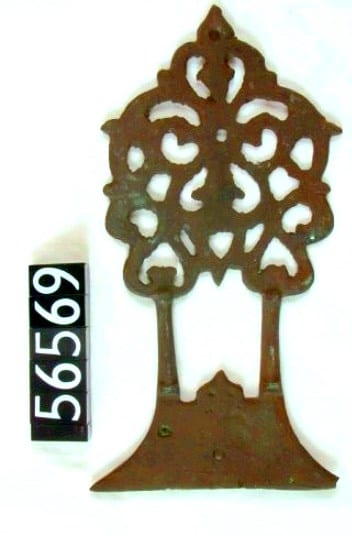Dragons of Arabia
By Edmund Connolly, on 2 October 2014
The collection
Ming is perhaps the most famous Chinese Dynasty which lasted nearly 300 years. Thanks to the intrepid adventures of the eunuch explorer Zheng He, exploration of the world grew and China were in trade-contact with countries as far as Oman and India.
Arab world art made a lasting impression on the Ming artists and artisans. Gradually, shapes and styles form the Middle East began to be incorporated into their designs. The intricate detailing of Arab metalwork designs proved especially popular, with the undulating line backgrounds transitioning onto the Chinese ware.
This piece from the Petrie collection shows this metalwork design. Made from a copper alloy the floral swirls at the top would have cast intricate shadows when lit, or perhaps have hung as an adornment. Pieces of a similar piece were also found by Petire at Lake Menzaleh (right at the north of Egypt), so perhaps there was a pair?
I am a law abiding citizen, so took no photos in the exhibition; you’ll have to trust me that the crossover is recognisable. Particularly in the forms of pottery, with the larger, bulbous east African pottery shapes being replicated with intricate dancing dragon motifs.
The exhibition
Is really good, if not entirely original. The standard red and yellow colour scheme runs throughout, but the curators did a fantastic job of summarising 300 years of history, culture and society into a comprehensible context for the objects, many of which have never been displayed outside of China.
The layout is far more manageable, although I would always advise going at 15.30/16.00 as it is so quiet, with the objects easily viewable and on prominent display. My favourite were the metre(s) long paintings of plum blossom and an incredibly minimalist black and white piece of a waterfall and bamboo scape which project out into the main room of the exhibition.
In all, definitely worth a visit, perhaps, before your visit, you should pop into the Petrie to see the Islamic metalwork and pottery designs that are referenced throughout the exhibition.
Edmund Connolly is the Museum Training School Manager
 Close
Close



